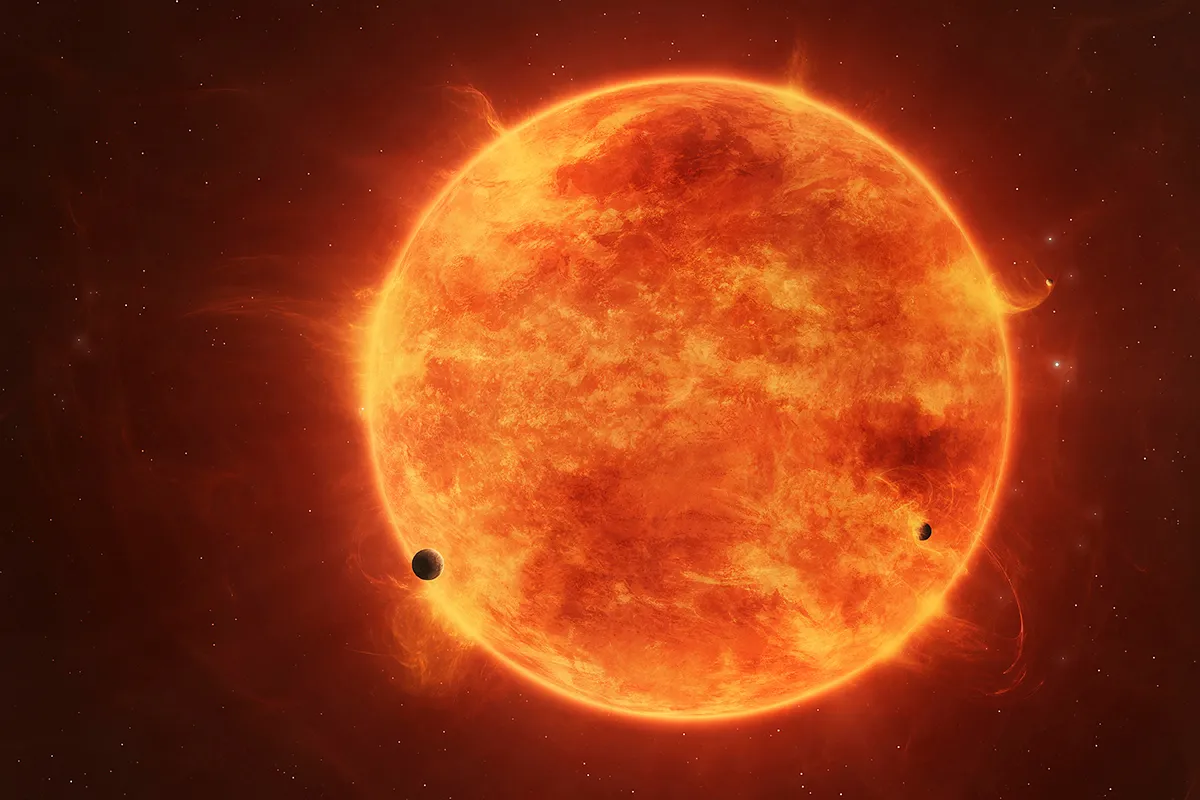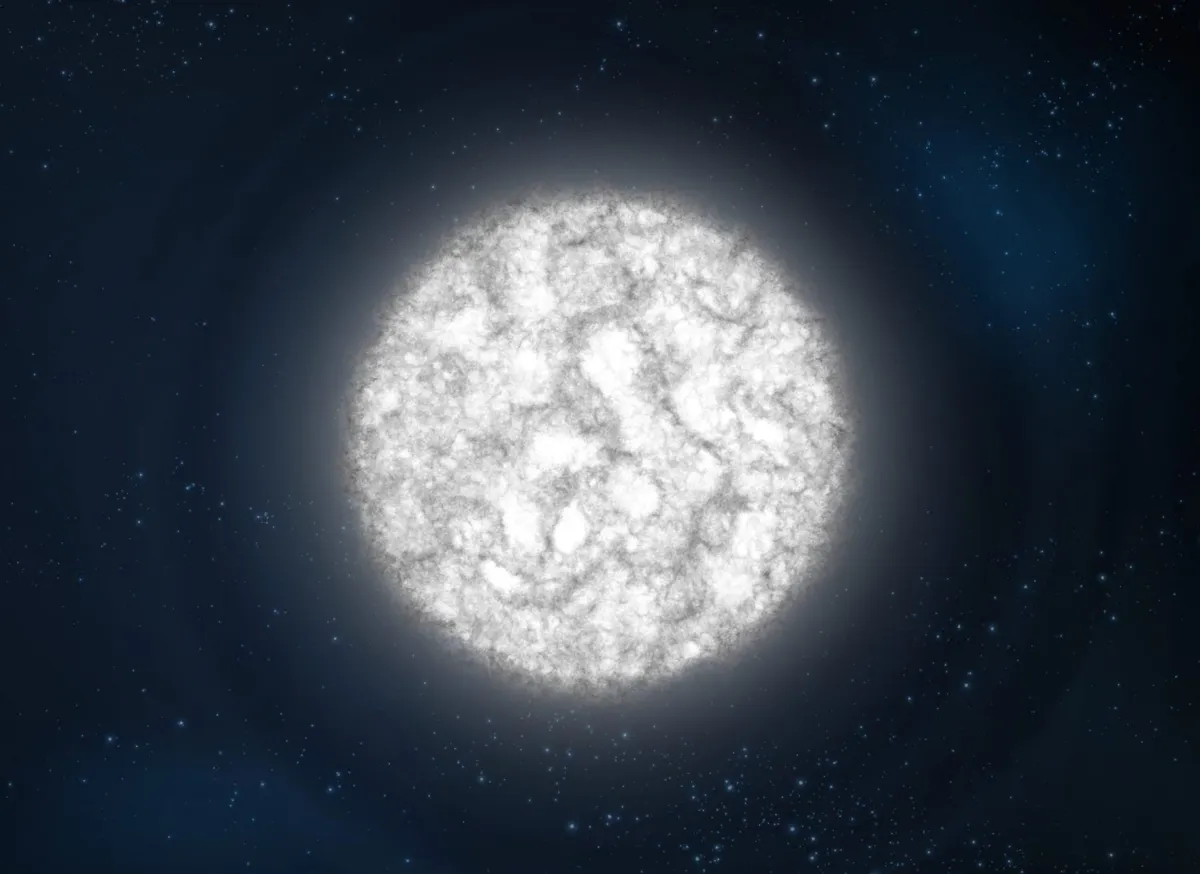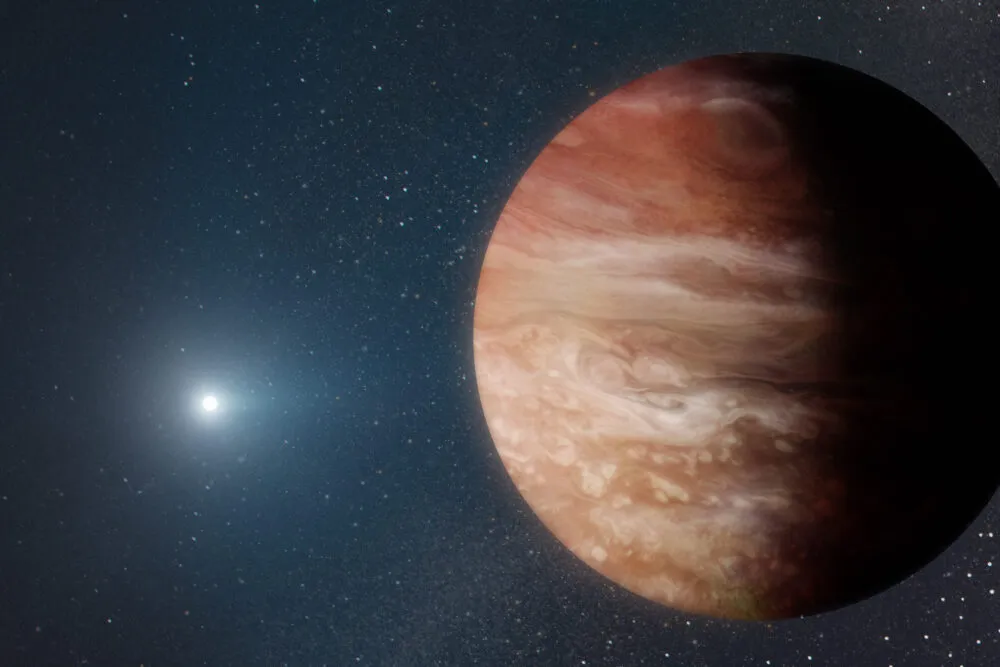Planets orbit stars. That much is obvious to most people with even a passing interest in astronomy!
But, as we know, nothing lasts forever. Eventually stars run out of fuel, and some stars end their lives by expanding and swallowing the planets that orbit them.
You can find out more about how this will affect our own Solar System in our articles What will happen when our Sun dies? and What will happen to our Solar System in the future?

But can some planets survive this process? If so, how?
Dimitri Veras is an associate professor and STFC Ernest Rutherford Fellow at the University of Warwick, specialising in the fate of extrasolar asteroids, comets, moons and planets.
We spoke to Prof Veras to find out more about the process by which dying stars destroy planets, and how some manage to avoid being annihilated.

How are planets destroyed at the end of a star’s life?
In the process of becoming a white dwarf, a star like our Sun undergoes major changes involving its size and luminosity, when the star transforms into a so-called ‘giant star’.
The star’s size increases by a factor of hundreds, and it will easily swallow planets that are too close.
For example, in the Solar System, Mercury and Venus will be swallowed.
Some of the planets that are further away will be gravitationally perturbed into a close orbit around the star.
We have a few examples of giant planets perturbed in this manner, but still no terrestrial planets.
Just after the giant phase, the star shrinks into a small, compact white dwarf.

Can some planets survive this?
Our investigation was one of the first-ever dedicated studies into tidal effects between white dwarfs and rocky planets like Earth and Mars, and asteroids.
Tidal forces occur because gravity acts more strongly on one side of a planet than the other.
This difference stretches the planet and the stretching becomes more extreme the closer the planet is to the star.
Hence, there is a critical distance at which the planet can no longer survive the stretching.
What did your investigation involve?
We created a procedure for computing these tidal effects and provided a type of ‘survival guide’ for planets with different properties like distance, viscosity and spin.
This allows us to determine if a particular planet will survive or be broken apart by the white dwarf, and if so, when.
We then used numerical simulations to implement this theory and provide specific examples.

Are small, rocky planets around white dwarfs particularly vulnerable?
The strength of tides is a function of many variables.
One of these is the size of the planet, because the gradient of gravitational forces is greater in larger planets, and creates a strong and fast inward gravitational drag towards the star.
Hence, smaller planets have a greater chance of surviving because they don’t move towards the star as quickly.
Another variable that affects tides is how ‘hardy’ a planet is, which is measured by its internal viscosity.
The more viscous a planet is, the longer it can resist the gravitational pull towards the star and to destruction.
What other factors affect a planet’s survivability?
One of the most significant is the distance from the white dwarf.
Another weaker but non-negligible factor is the spin rate of both planet and star.
Planets can be destroyed around many types of stars, not just white dwarfs.
Unlike other stars, however, white dwarfs provide a glimpse into the Solar System’s future and the future of nearly all known exosystems.

What is the fate of the surviving planet when its white dwarf star radiates all its energy?
The radiation of a white dwarf has no direct effect on gravitational tides.
However, white dwarfs that have faded are very old, and the timescale over which gravitational tides act is a key determinant of survival.
For example, a faded white dwarf that is five billion years old is less likely to host a survivor planet than a faded white dwarf that is three billion years old, simply because in the former case there was more time for gravitational tides to drag the planet in and destroy it.
What should astronomers should look out for when studying exoplanets?
One of the next most significant discoveries will be a terrestrial-like planet orbiting a white dwarf.
So far only giant planets and small asteroids have been found orbiting these stars.
We’ve shown that Earth-like planets can survive stably around white dwarfs for long periods.
Our results provide a ‘guidebook’ and an incentive for observers to finally find them, because we’ve demonstrated that in many cases they can survive for at least hundreds of millions of years.
This interview originally appeared in the January 2023 issue of BBC Sky at Night Magazine.
